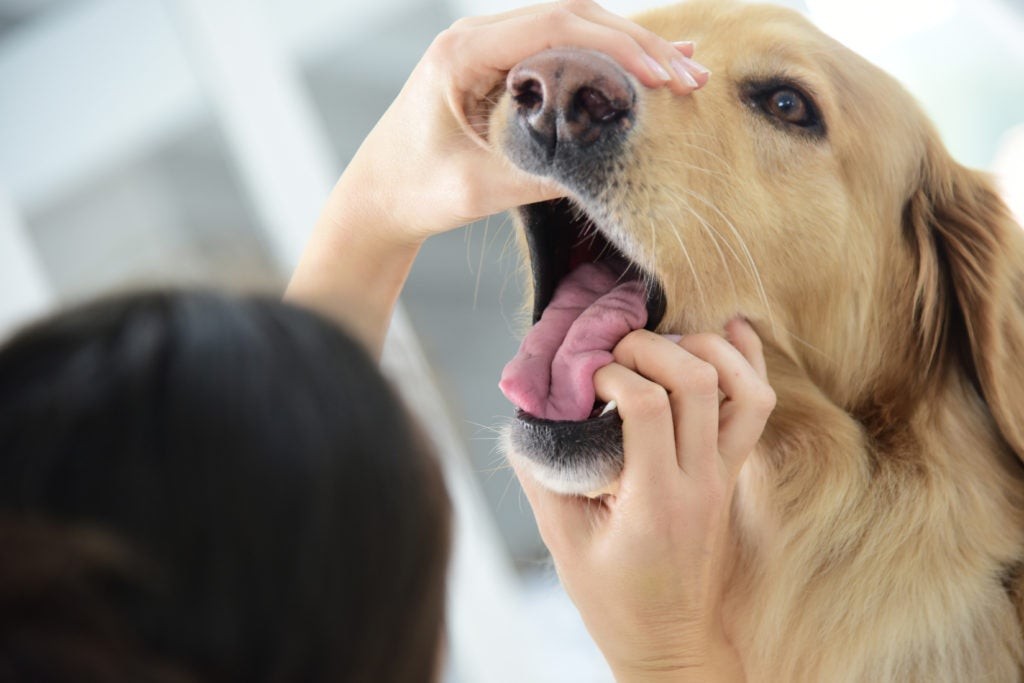Discovering your dog has ingested something harmful can be a frightening experience for any pet owner. In such moments, inducing vomiting might seem like a quick solution to expel the toxic substance from your dog’s system. While vomiting can be an effective first-aid measure, it’s crucial to understand when and how to safely make a dog throw up. It is always recommended to consult with a veterinarian or pet poison control immediately in these situations. This guide will provide you with essential information on how to make a dog vomit safely, which methods are appropriate, and when inducing vomiting is strictly contraindicated. Your dog’s health is paramount, and acting with informed caution is key in emergencies.
When Should You Make Your Dog Vomit?
If your dog has eaten something potentially poisonous, prompting them to vomit can be a beneficial immediate response, but only under specific circumstances and ideally with veterinary guidance. If you observe your dog consuming something toxic, and it’s within a short window of time, typically within two hours of ingestion, inducing vomiting can help prevent the absorption of the harmful substance.
It’s important to consider what your dog has ingested. Inducing vomiting is generally considered if your dog has eaten:
- Certain Toxic Foods: Like chocolate, especially dark chocolate, raisins, grapes, onions, and macadamia nuts.
- Household Items: Non-corrosive cleaning products, certain medications (always confirm with a vet first), or small toys that could cause a blockage.
However, always prioritize contacting your veterinarian, an emergency vet, or a pet poison control helpline before attempting to induce vomiting. They can provide tailored advice based on the specific toxin, the amount ingested, and your dog’s health status.
When NOT to Induce Vomiting in Dogs
Inducing vomiting is not a universal solution and can be dangerous in several situations. Never induce vomiting in your dog if any of the following conditions apply:
- Corrosive Substances: If your dog has swallowed corrosive materials such as strong acids (toilet bowl cleaners), alkalis (drain cleaners), or bleach. Vomiting these substances can cause further damage to the esophagus and mouth.
- Sharp Objects: If your dog has ingested sharp objects like glass shards, needles, or sharp plastic pieces. Vomiting could cause injury to the esophagus or throat.
- Petroleum Products: Substances like gasoline, kerosene, or motor oil should not be vomited as they can cause aspiration pneumonia—a severe lung inflammation caused by inhaling vomit.
- If Your Dog is Already Vomiting: Do not induce further vomiting if your dog is already throwing up.
- Signs of Distress: If your dog is lethargic, unconscious, having difficulty breathing, or showing signs of seizures.
- Brachycephalic Breeds: Breeds with short faces like Pugs, Bulldogs, or Pekingese are at higher risk of aspiration pneumonia, making induced vomiting potentially more dangerous. Always consult a vet first.
- Late Ingestion: If it has been more than two to six hours since your dog ingested the harmful substance. By this time, the substance may have already moved past the stomach into the intestines, or been absorbed into the body, making vomiting less effective and potentially more risky.
In these situations, the safest course of action is to immediately take your dog to a veterinarian or emergency veterinary clinic.
Using Hydrogen Peroxide to Induce Vomiting Safely
If, after consulting with a veterinary professional, you are advised to induce vomiting at home, 3% hydrogen peroxide solution is often recommended. It’s a readily available household item and generally safe for this purpose when used correctly.
Hydrogen peroxide works as an emetic by irritating the lining of the stomach and triggering the vomiting reflex. It typically takes effect within 10 to 15 minutes, and it’s estimated to expel about 50% of the stomach contents. The vomiting process can last up to 45 minutes.
Important Safety Precautions When Using Hydrogen Peroxide:
- Use Only 3% Solution: Ensure you are using 3% hydrogen peroxide. Higher concentrations are dangerous and can cause serious internal damage.
- Correct Dosage: The standard dosage is 1 teaspoon (5 ml) per 5 pounds of body weight, with a maximum dose of 3 tablespoons (45 ml) for larger dogs over 45 pounds. Always confirm the correct dosage with your veterinarian.
- Administer Correctly: Use an oral syringe or turkey baster to administer the hydrogen peroxide. Squirt it gently into the side of your dog’s mouth, between their cheek and teeth, or from the front into the back of the mouth. Avoid forcing it down their throat, which could cause aspiration.
- Supervise Closely: Stay with your dog and monitor them closely during and after vomiting. Ensure they vomit in a place that is easy to clean and away from their usual resting or feeding areas.
- Do Not Repeat Doses Excessively: If your dog doesn’t vomit after the first dose within 15 minutes, you can give a second dose. Do not administer more than two doses in total, and if vomiting does not occur after the second dose, seek immediate veterinary care.
- Potential Risks: Be aware of potential risks such as prolonged vomiting, aspiration pneumonia, and irritation of the gastrointestinal tract.
 Image: A veterinarian carefully examining a dog’s teeth, highlighting the importance of professional veterinary care in assessing a dog’s health.
Image: A veterinarian carefully examining a dog’s teeth, highlighting the importance of professional veterinary care in assessing a dog’s health.
Step-by-Step Guide: How to Make Your Dog Throw Up with Hydrogen Peroxide
Follow these steps carefully if you have been advised by a vet to induce vomiting at home:
- Contact Your Veterinarian First: This is the most crucial step. Always call your vet, an emergency vet, or a pet poison helpline for guidance before you proceed. They will assess the situation and advise if inducing vomiting is the right course of action and if hydrogen peroxide is appropriate.
- Offer a Small Meal (Optional): If your dog hasn’t eaten recently (within the last two hours), giving a small amount of food can sometimes make vomiting easier. Food in the stomach can give the hydrogen peroxide something to act upon and can make the vomiting process more effective.
- Prepare 3% Hydrogen Peroxide: Double-check that you have a fresh bottle of 3% hydrogen peroxide solution. Measure the correct dosage based on your veterinarian’s advice and your dog’s weight.
- Administer the Dosage: Use an oral syringe or turkey baster for accurate and gentle administration. Aim to squirt the hydrogen peroxide into the side of your dog’s mouth or towards the back of their tongue, being careful to avoid aspiration.
- Wait and Observe: It usually takes about 10-15 minutes for hydrogen peroxide to induce vomiting. Encourage your dog to move around gently but avoid strenuous activity.
- Collect and Examine Vomit: If your dog vomits, collect a sample of the vomit in a container or bag for your veterinarian to analyze. This can help identify the ingested substance and guide further treatment. Check the vomit for the suspected toxin. Prevent your dog from re-ingesting the vomit.
- Monitor for Complications: Watch for any adverse reactions or complications after vomiting, such as prolonged vomiting (over 45 minutes), diarrhea, excessive lethargy, bloating, or signs of gastric distress. If these occur, contact your vet immediately.
- Veterinary Follow-Up is Essential: Even if you successfully induce vomiting at home, it’s critical to follow up with your veterinarian as soon as possible. They may recommend further treatment, detoxification, or monitoring to ensure your dog fully recovers.
- Consider Throat Soothing (Vet Approved): After vomiting, your dog’s throat might be irritated. Consult your vet about using a pet-safe throat-soothing remedy, but only administer something if your vet recommends it.
Timing is critical in these situations. Remember, the safest approach is always to seek immediate veterinary care. Inducing vomiting at home should only be considered when professional veterinary help is not immediately accessible and under direct veterinary guidance. Your prompt action and informed decisions can make a significant difference in your dog’s recovery.
